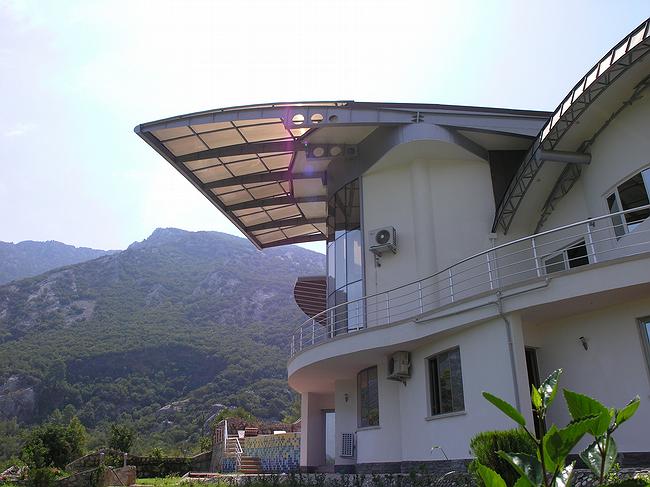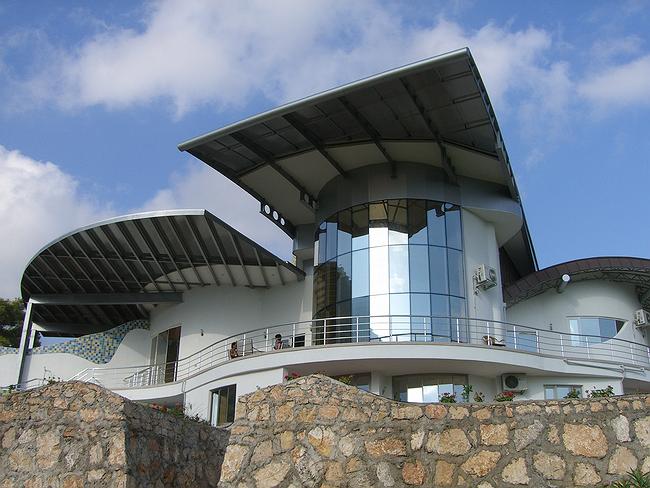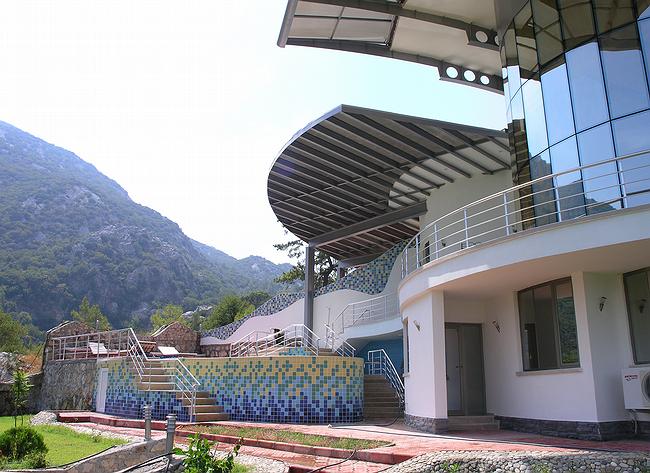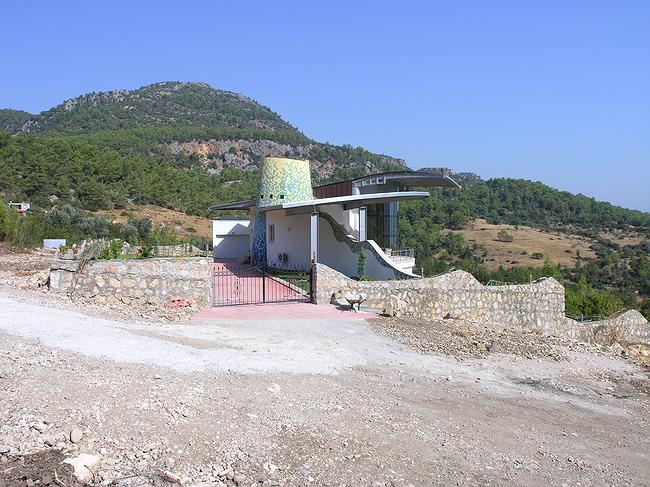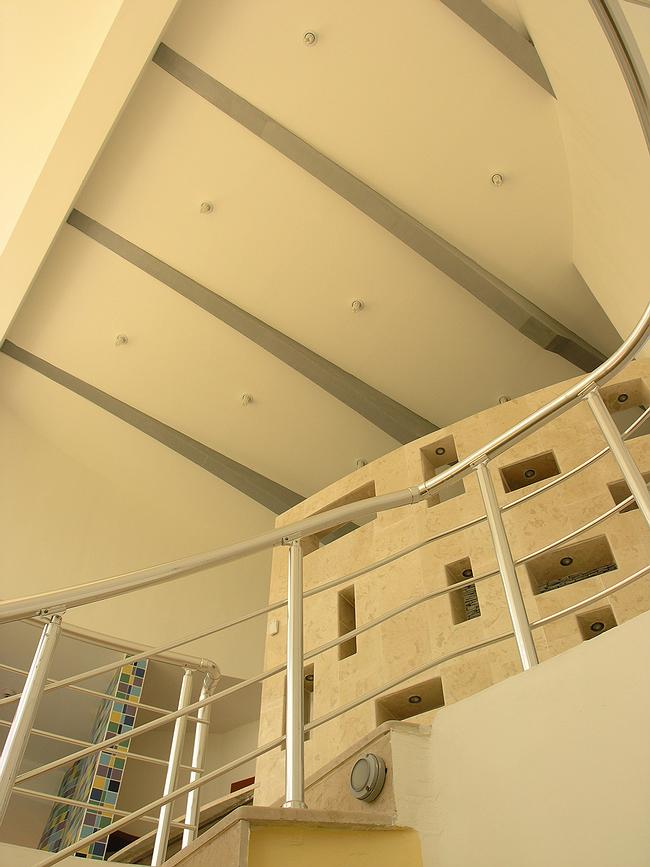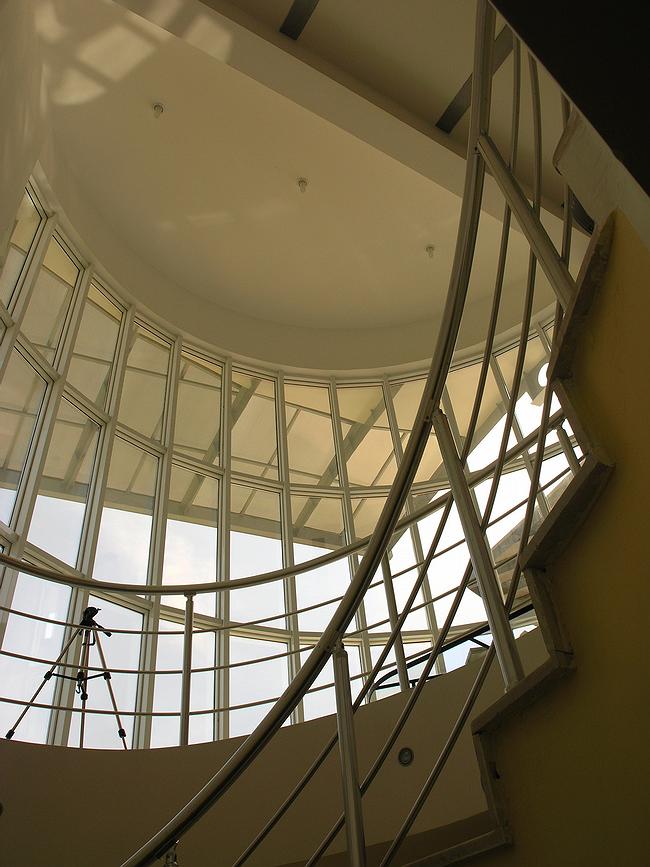|
Published on Archi.ru (https://archi.ru) |
|
| 31.08.2007 | |
|
Flying fish |
|
|
Julia Tarabarina, Irina Filchenkova |
|
| Studio: | |
| Architectural bureau of Yuri Vissarionov | |
|
From below, from the slope side, it looks like a huge flying fish – there is a kind of fish that has ribby sail-like fins. It came here long ago from the Mediterranean Sea, on a hill of Turkey mountains. Or it might be a flying machine from a sketch by Leonardo Da Vinci with artful Icarus wings. This main allusion comes out of the canopies, either overhanging, or flying up over the open terraces viewing the valley. The canopies are long, slightly curved, and made of polarized glass that is fixed with carcass of metal ribs – they, actually, make the image look more natural and icarus-like. The idea is developed inside the house – the extension of the metal carcass can be seen on the ceiling over the stairs, a little buried in plaster mass, but leaves no doubts: we have just seen the creature outside, and we see it inside now. The house is inserted into quite a seep hill – this helps to provide the house tenants with maximum of privacy, quite closed from the outside world, which are the road, that passes upwards, and a small desolate village that nowadays is slowly getting recovered. The difference of heights allows isolating from the road – from this side the villa, 250 m2 of total space, seems small and reminds of a park sculpture – mostly due to the colorful chimney-like tower, not at all of a fortification kind, but on the contrary, very much open. The tower is faced with ceramic tiles, changing color from dark blue at the bottom and to light yellow at the top, and this is very much like coloring of the nearby hills, only brighter. The idea of roundness set by the tower is spread on the whole building, which, if view from these sides, doesn’t look like a fish any longer, but a giant coral, that has sprout through the slope in the form of huge cylindrical volumes, smoothly moving from one to another. Windows have also got rounded and varied outlines, and the largest one - the half-round stained glass two-storey high – opens mountain scenes from the living-room. In some parts stripes of blue-yellow tiles can bee seen on the whiteness of the façade – they hold the edges of the open swimming pool and outline the stone parapets of the walls, harmonizing them with the azure of the mountainous landscape. Outside the house is surrounded with traditional for this region stone fence, which also conveys the whole roughness of outlines – with the fence terraces for garden a cut out of the hill, it is closer now to the ground and opens the way between the angularity of the hill stones and the smooth sculpturalness of the villa’s walls. Plenty of ceramic tiles, surface smooth and rounding intensively, that tells about rejection of corners – and what we see, sharp iron ribs, sail-like flight of awnings, acuity of glass shine. This, altogether, makes a unique image, concentrated on sculptural effects of different forms, in a way very much like wild mountainous landscape, in a way man-made. Though no new technologies have been used, apart from the usual level of comfort for such a house – it’s own boiling room and an option to turn on a coffee machine via internet, in this house, that has nestled to the hill, has its own comfort and quite a fantastic impulsion to futurism – tune to some architectural forms by Antoni Gaudi. NoneNoneNoneNoneNoneNoneNone |
|
